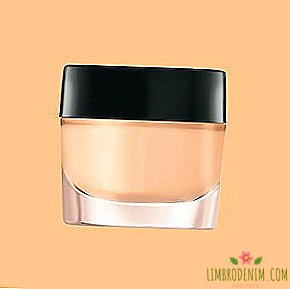From Versace to Ashish: How "luxury" dictated fashion in Russia
It is difficult to imagine - what now seems pretentious, once it seemed normal. Huge coats, jackets with large buttons, leather coats, tight dresses, plus giant labels and a lot, a lot of gold - this is how most of the most solvent public looked in the 90s, and it was those who were engaged in fashion retail. The market was not formed - the purchase and customs clearance of things, the behavior of sellers, interiors and even the protection of shops was not at all what we are used to today. While the few who could afford it, were eager to consume, corruption in all spheres corrected the rules of the game.

World fashion began to integrate in Russia in the early 90s, but this directly affected only a very narrow circle of people. The things that demonstrated and in some way determined the status of a person were very specific and now speak more about the lack of taste than about the class. If the buyer had the opportunity to spend big money on clothes, then each of his things literally shouted about the viability of its owner, whether it be a dress from Lurex or a jacket Gianfranco Ferré. Such needs were guided by the purchasers of the first Russian boutiques: demand, as is known, generates supply, and vice versa.
The first to start thinking about creating expensive stores were consumers themselves - girls and wives, either gangsters or businessmen - which often meant the same thing. In fact, it is thanks to them that the constellation of expensive stores came to replace the closed 200th section in GUM, the prices of which were indicated in arbitrary units. The names of famous stores of those days seemed to have sunk into oblivion: "Charm", Soty and many others.
With the opening of a watch and jewelry store in 1993, the notorious Mercury company, one of the largest players in the luxury goods market, begins its history. Their Moscow Central Department Store, rediscovered under the auspices of the new company, became a response to the Paris gallery Lafayette or London Liberty. Around the time of the expansion of Mercury, Mikhail Kusnirovich’s Bosco di Ciliegi company is gaining momentum from opening three stores in Petrovsky Passage. The businessman, together with his partners, also leases the GUM building: ironically, the historically competing GUM and TsUM are still on the warpath. It is worth noting that just their audience, who is burdened with “heavy luxury”, perceives changes most difficultly, new brands have changed the least during the existence of the “luxury segment” in Russia.

Purchasing and customs clearance of things, store interiors and sellers behavior was not at all what we are used to today.

In the late 90s and early 2000s, Western luxury companies themselves began to turn their eyes on Russia, denoting it as a potential gold mine - all due to the irrepressible love of expensive things and the lack of a sense of proportion in the new audience. Galina Denisova, now founder and designer of the Bluebox jewelry brand, in the late 1990s and early 2000s, invited to lead the already existing flagships of Gianfranco Ferré and Versace, says: “It was a time of easy money and luxury, a time of luxury and reckless shopping. And Gianni Versace was truly a symbol of this era. It was a turbulent time of the formation of capitalism in Russia. " Designers themselves followed the changes in a once closed country with interest: “For example, Gianni himself took part in the design of the Moscow boutique Versace. He was very cool, as a designer and artist he was ahead of time. The interiors of the shops were luxurious.”
Moscow is still considered the center of gravity of Russia for those who are used to spending six-figure sums on packages with things. The well-to-do (and more than well-to-do) residents of the regions still leave large sums in GUM and TsUM during business trips to the capital. It is believed that the opening of flagship boutiques and expensive stores began in the capital, but, in fact, St. Petersburg was also not on the absolute periphery - in 1988, the Babochka store began to story here, later responsible not only for the huge multi-brand, but also for the flagship Ermenegildo Zegna , Emporio Armani and not so long ago - Valentino. It was in St. Petersburg that a separate store, COMME des GARÇONS, once appeared, whose design was controlled by Ray Kawakubo herself.
Now, even during the crisis, shop windows in Stoleshnikov Lane continue to shine blindingly, and new collections appear at the same time as in other major European capitals. We got used to today's Moscow, and it’s strange to imagine that fifteen years ago everything looked radically different. “There was practically no competition as such: there were only a few expensive shops in Moscow - this is Moscow’s trading house on Kutuzovsky, boutiques in Slavyanskaya, our shops in Kuznetsky. After them, other customer-oriented stores began to appear -story - Leform, Podium ", - says Galina.

Leform, which once became a store of new formation, recently celebrated its 18th anniversary. His discovery coincided with the emergence of new consumers - those who began to choose a perfume with the smell of a fire instead of the sweet aromas of sweet life and the complex coat of COMME des GARÇONS instead of Roberto Cavalli leopard coats. True, the founder of the project, Rodion Mamontov, says that it was not his desire to please anyone: “In 1977 I realized for the first time that in order to be beautifully dressed in the then USSR, good acquaintances are needed, money and a car of patience. And even in this case, the choice would have turned out to be very meager according to current notions.
Subsequently, Leform also played a role in “nurturing” the audience: “When we conceived our first concept store, we wanted our assortment to be different from the“ uniform ”of that time. We literally formed our own audience. These were people who progressively thought and dressed at that time. And in fact there were very few of them. Later they became our clients and friends. " C since the founding of Leform did not change direction radically. Now there are more than two hundred brands represented in the store, but one of them could somehow be presented at the very beginning of work - the girls, with all their hearts attached to gloomy aesthetics, turned away from insane cuts.

Campfire-scented perfume replaced the aromas of sweet life, and COMME des GARÇONS coats replaced Roberto Cavalli coats

James, who opened on Tverskaya in the early 2000s, has always been compared to Leform: Muscovites have learned about the Japanese-Belgian wave, thanks in part to him. The store organized exhibitions and lectures long before it began to do everything. But, unlike Leform, the store closed, only a little before reaching its tenth anniversary, also engendered interest in the "intellectual fashion", the favorite definition of the fashion gloss of the beginning of zero. A certain confrontation between the admirers of the “heavy luxury” and those interested in the conditional Japanese-Belgian wave has existed for a long time.
There is a huge list of projects that were implemented in Moscow for a short time. A bright flash for Moscow retail was the existence of the Chic Blesk Krasota store, founded by Ekaterina Gomiashvili at the Patriarch's Ponds in which it was possible to buy her brand Emperor Moth. The project with the predominantly Australian designers Cara & Co, as well as Svetlana at Kuznetsky Most, Lanvin, Alexander McQueen and Stella McCartney, can now be bought from the same TSUM for a short time. Mood Swings with crazy sweaters by Jean-Charles de Castelbajac and cocoons of Undercover on Nikitsky Boulevard also went into oblivion. Did they affect the style of the inhabitants? The controversial issue is that those who dressed there had the opportunity to travel and thus buy things not only here. For them it was a nice bonus, and the pool of regular customers was made up of friends and acquaintances of the owners.

A new revolution in the life of retail has happened with the opening of the concept store and cafe Kuznetsky Most 20 in 2009. From the very beginning of the store they sell rare stamps, limited sneakers, decorations of little-known conceptualists and art books. Olga Karput, the founder of the project, says that partly her idea of creation was prompted by the lack of places in Moscow that she would have liked herself: "I traveled a lot, saw the coolest concept stores in the world and understood that there is no such project in Moscow I responded to my ideas about the right concept store. Many brands were represented in Moscow, but I was not impressed by the choice of things. In fact, I had nowhere to dress. After watching Dover Street Market, Colette and many other stores, we gathered a cool team of young and tala tlivyh and the intention is to make a strong new concept store of world-class in Moscow. "
The audience of Kuznetsky Most 20 is the most disparate audience and perfectly illustrates the solvent audience today - it is both stylists and rich loafers, and just fashionistas, postponing from salary to new sneakers. The plans that Kuznetsky Most 20 sets for itself now perfectly describe what the entire Moscow retail is moving to - of course, online presence: "We recently launched an online store, which now allows fashionistas around the world to see our choice and order the coolest things we select. One of the priorities is the development of the KM20 global presence. " Not only KM20, all modern retail has already understood how important it is to have your own online store. Aizel, another old Moscow player in the luxury segment, began to develop its presence in a powerful way. Launched the online store SVMoscow - a place once famous for working in a semi-closed mode. But what to say, some kind of online shop is even at TsUM, which is usually hard on any changes.
In many ways, it was thanks to retailers with good taste and flair that the uncompromising and ruthless spirit of the luxury of the 90s and zero exhausted itself gradually, and the boutiques on Kutuzovsky Prospekt are no longer the fashionable hallmark of the city. And although Dolce & Gabbana is still the best-selling and successful brand of Mercury, in the all-Russian and even separately taken Moscow context this is no longer a synonym for luxury. Not to mention the fact that the monopoly on "fashion and style" no longer exists. For this, it is worthwhile to thank the monobrends of expensive intellectual brands that have opened in recent years from Céline to Stella McCartney, and online shopping, and, of course, the mass market in all its diversity, operatively picking up and adapting all the trends.
Photo: 1, 2 via Shutterstock, Leform, The Village





